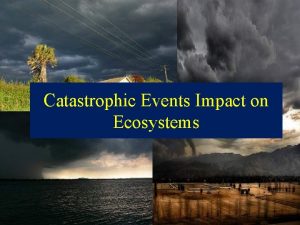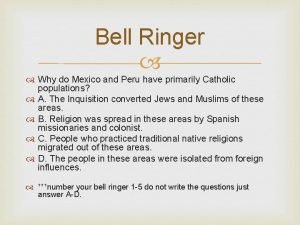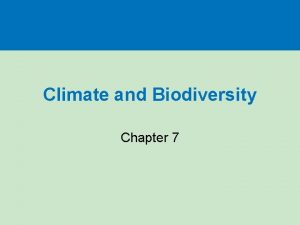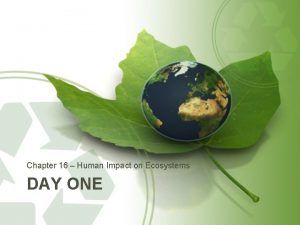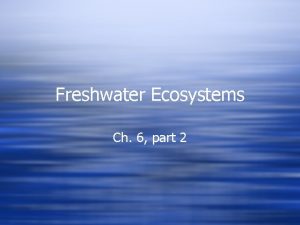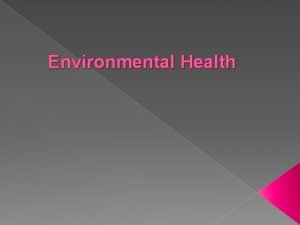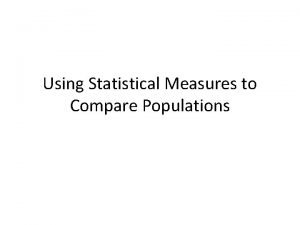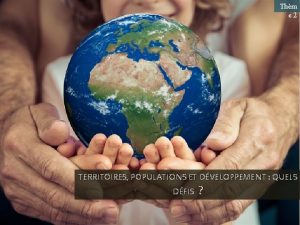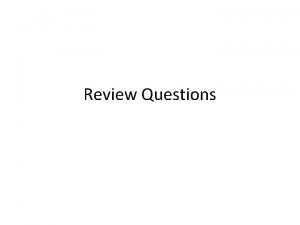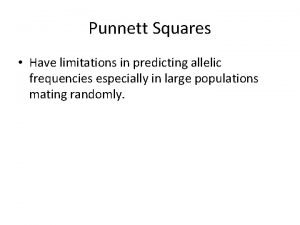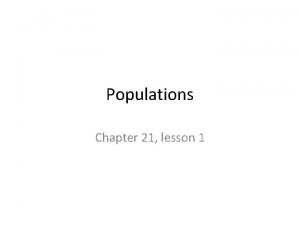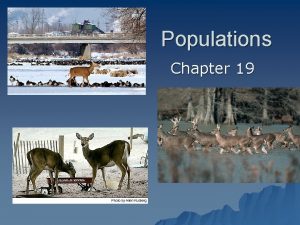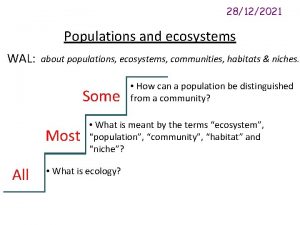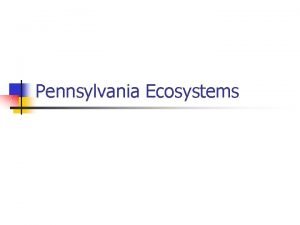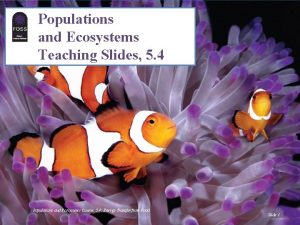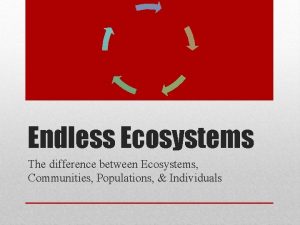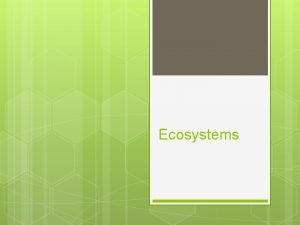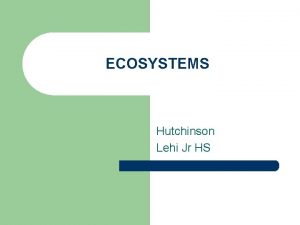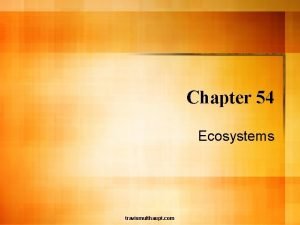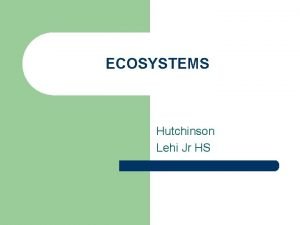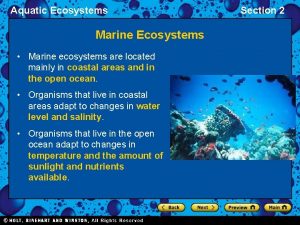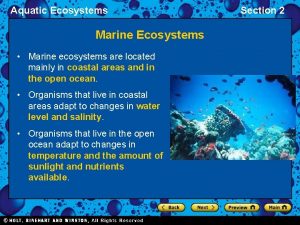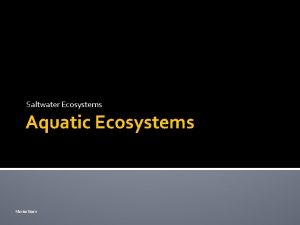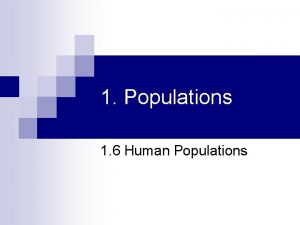HOW HUMAN ACTIVITIES AFFECT ECOSYSTEMS Human populations have




















- Slides: 20

HOW HUMAN ACTIVITIES AFFECT ECOSYSTEMS Human populations have a greater impact on ecosystems than populations of most other living things. Because there are so many of us, we use a lot of earth’s resources. Our activities can change ecosystems so much that their health is often threatened because organisms may not be able to get the resources they need to survive there.

DISCUSSION: CUTTING DOWN TREES Around the world, vast numbers of trees are cut down, and used for many reasons. In some cases, the land is also used. 1. Name different uses for timber. 2. Name two different uses for the land of cleared trees 3. Name 3 effects of clearing trees on the organisms that make their homes in forested areas.

Examples of Human Activities and their Consequences for Ecosystems Construction of roads and buildings Abiotic and Biotic Consequences Surface soil is removed, killing soil organisms and plants that were rooted in soil. The shape or slope of the land is changed making different patterns for drainage of rainwater. Farmland that is taken over to build roads and buildings can no longer be used to grow crops and livestock

Dam building

Abiotic and Biotic Consequences of Dam Building • The courses of rivers and streams are changed so that water will flow to the specific place chosen for the dam. • Land is flooded to create lakes in places where none existed before. • Huge numbers of living things are killed • Huge numbers of living things are displaced, they must find new places to live. (HUMANS TOO)

Manufacturing and Consumption of Goods Abiotic and Biotic Consequences • Soil and plant life are removed to make space for factories and landfill sites • Factories consume energy to make products • Production creates wastes that pollute air, water, and soil • The packaging, transportation and consumption of goods creates wastes that must be disposed of. • Disposal and recycling of wastes consumes energy

INTRODUCED SPECIES CAN AFFECT ECOSYSTEMS An Introduced Species is a kind of plant, animal, or other organism that lives in a place where it is not found naturally. The species has been introduced there, either deliberately or accidentally, by human activities.

The European Starlings are native of Eurasia and North Africa. Starlings were introduced into the U. S. in 1890 when 60 birds were released in New York's Central Park. The goal at that time was to bring every bird ever mentioned in Shakespearean literature into the United States From this unusual beginning, the European Starling gradually spread throughout the United States and had an estimated population of 140 million birds in 1994.

Problems of Starlings tend to congregate in very large groups, causing deafening noise and leaving behind great accumulations of dung.

Introduced Species that have Not Caused Harm Apples, Corn and many other food crops grown in Ontario are introduced species. Limiting factors such as consumers and disease keep populations of these species in balance.

Introduced Species • Purple loosestrife, originally brought to North America accidentally on cargo ships, reproduces very quickly and aggressively. • They often crowd out species like the cattail that have been growing in British Columbia for thousands of years. • It has also invaded many aquatic ecosystem turning them into terrestrial ecosystems with little species diversity.

Purple Loosestrife • Recently, ecologists have introduced a European leaf-feeding beetle to eat the purple loosestrife.

Zebra Mussels • Zebra mussels are what is known as a freshwater mollusk, these mollusks are native to the Black and Caspian Sea region of Asia. It is believed that the mussel was introduced to the Great Lakes via water ballast dumping from foreign ships in the early to mid 1980 s. Since that time they have spread throughout all of the Great Lakes passively carried by water currents.

Impact of Zebra Mussels • Significant changes to aquatic ecosystems have happened because of zebra mussels. • Zebra mussels eat large amounts of phytoplankton, and compete with zooplankton, which are an important food source for young fish. • Diporeia which is a tiny shrimp-like organism that lives in the bottom mud and whose source of food is settling algae have declined in numbers since zebra mussels have risen. • Species such as whitefish and other prey fish including alewife, bloater, smelt and sculpin directly depend on Diporeia as a food source

Pollutants from Human Activities You live in a watershed. A watershed is any area of land that drains into a body of water. The area of land could be a city, or natural area. The water that the land drains into could be a pond, a river, a lake, or the ocean.

PART TWO POLLUTANTS FROM HUMAN ACTIVITIES

Why do we need watersheds? • They provide water people use for drinking, cooking and washing • Water used by other living things for drinking, washing and cooling off. • Places to live • Irrigation for farmland • Water for use by industries for cooling and cleaning equipment • Recreation areas for swimming, boating, snowmobiling, relaxing

Why do we need to be careful about things we wash down the drain and flush down the toilet? • All watersheds connect terrestrial ecosystems with aquatic ecosystems. This connection means what we do on land can affect the water, and vice versa. • If you live on a farm or rural area, the wastes flow into a septic tank and then into a septic field on the property

Why do we need to be careful about things we wash down the drain and flush down the toilet? • If you live in a city or in a small urban area, the wastes flow into a system of pipes. These pipes lead to larger pipe systems that direct the wastes either to waste water treatment plants or directly into bodies of water

Watersheds and You • You share your watershed with thousands of people, and other living things. • The wastes from your watershed feed sooner or later into a body of water like a lake, river or ocean. • So everything you do affects the living things in the ecosystems that are affected.
 How can flooding impact ecosystems
How can flooding impact ecosystems Ringe til peru
Ringe til peru Human impact on terrestrial ecosystems
Human impact on terrestrial ecosystems Chapter 16: human impact on ecosystems answer key
Chapter 16: human impact on ecosystems answer key Chapter 16 human impact on ecosystems
Chapter 16 human impact on ecosystems Lentic ecosystem
Lentic ecosystem A solid figure with 6 faces 12 edges and 8 vertices
A solid figure with 6 faces 12 edges and 8 vertices Operating activities vs investing activities
Operating activities vs investing activities It is a popular indoor and outdoor sport
It is a popular indoor and outdoor sport Primary and support activities
Primary and support activities Primary activities definition
Primary activities definition Habit as a modifier of human act
Habit as a modifier of human act What is the definition of environmental health
What is the definition of environmental health Using statistical measures to compare populations
Using statistical measures to compare populations Territoires populations et développement quels défis
Territoires populations et développement quels défis Evolution of populations section 16-1 genes and variation
Evolution of populations section 16-1 genes and variation A biologist discovers two populations of wolf spiders
A biologist discovers two populations of wolf spiders What are the limitations of punnett squares
What are the limitations of punnett squares Lesson 1 populations answer key
Lesson 1 populations answer key Section 19-2 review measuring populations
Section 19-2 review measuring populations Chapter 16 evolution of populations vocabulary review
Chapter 16 evolution of populations vocabulary review
